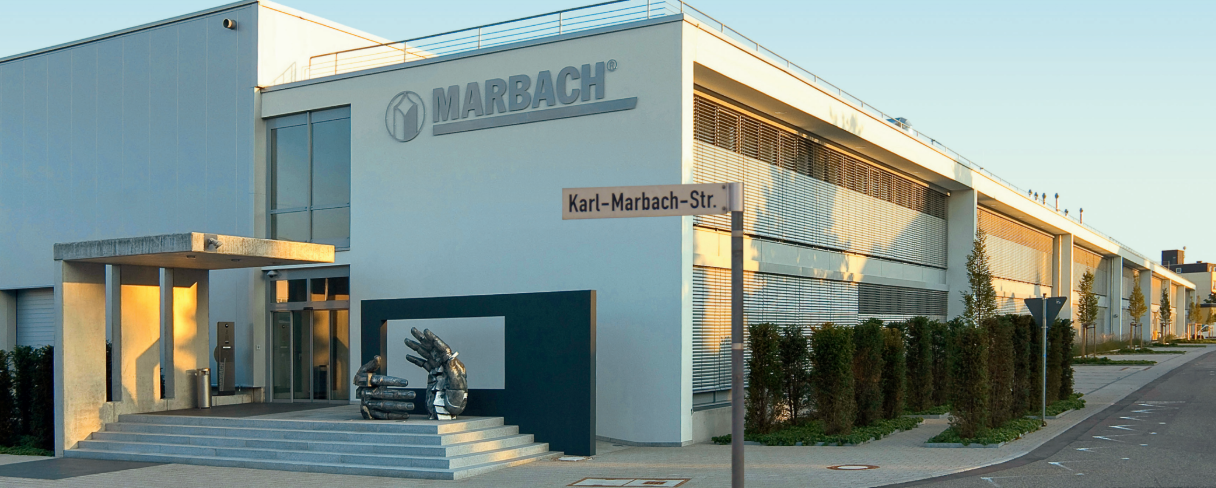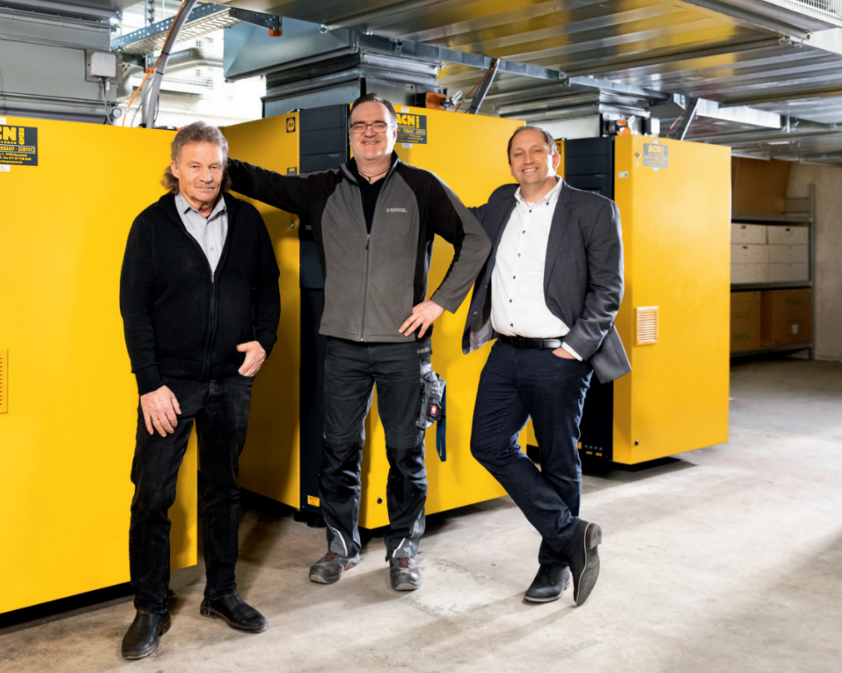
5 minute read
Maximum performance for the packaging industry
For over 100 years, global tool manufacturer Marbach has been supplying its customers in the cardboard, corrugated board and plastics industries with innovative cutting tools, thermoforming tools, technologies and services. Marbach solutions are synonymous with minimal setup time, high packaging quality, as well as safe and efficient processes.
Marbach’s extensive portfolio is divided into two areas: Marbach Die-Cutting Technology supplies the global packaging industry with tools for producing packaging from cardboard and corrugated board for the pharmaceutical, cosmetics, food and technical product sectors. In addition, Marbach offers machines, materials and other services related to die cutting. Marbach Tool Manufacturing provides the global packaging industry with thermoforming tools for producing cups, lids and meal trays from plastic for the food sector. The portfolio also includes various services related to thermoforming, as well as form, fill & seal (FFS) solutions and high-precision special applications.
Bold investment
The mechanical workshop founded by Karl Marbach Sr and two partners in Heilbronn in 1923 marked the beginning of a company history that reads like the narrative from a thriller novel. Over its more than 100 years of existence, Marbach has overcome numerous challenges: inflation, war, recession, pandemic and supply crises. Yet nothing could halt the company’s success. This was due in no small part to a bold decision made by Karl Marbach Jr, the founder’s son: despite the enormous inherent risk, in 1972 he invested in a technology that was unique in European die-cutting technology at the time – the first CNC-controlled CO2 laser-cutting system for die making. The introduction of this technology represented a quantum leap in die making and established Marbach as a pioneer and market leader in Europe. The company continued to cement its position as an innovation leader in the years that followed. The use of laser technology for the manufacture of cutting tools was therefore not only a major milestone for the Marbach Group and the European die-cutting industry as a whole, but is the foundation of the company’s success.
Sustainability as a corporate goal
Today, the production halls at the Heilbronn site house 7 of the 78 laser-cutting systems installed worldwide, which together account for approximately 40 percent of the compressed air consumption for Marbach’s die-cutting technology division. Compressed air is also used as control air and for test runs on the thermoforming machines.
In this process, the heated film is pre-stretched with a stamp and then fully shaped with compressed air. The compressed air remains in the mould during the cooling period, pressing the item against the mould so as to ensure cooling. Marbach’s overall annual compressed air demand is approximately 4.5 million cubic metres, and the company had been considering improvements to its compressed air supply since 2015. Andreas Nittke (Head of Energy, Plant and Operations Technology), summarises the initial situation: “Continuous production expansion has repeatedly led to increased demand for compressed air, causing the old compressed air station to slowly reach its limits. There was a lack of redundancy, and we wanted to find a new, self-contained and centrally located site in the compressed air network for the new station in order to address existing problems with pressure losses, high ambient temperatures in summer, and emissions.” Sustainability is a key priority at Marbach, so another important goal was to ensure that the new systems would operate with considerably greater resource and energy efficiency. As part of the process to assure optimal design of the station as a whole, apprentices trained as Eco-Scouts were sent out in advance to identify unnecessary compressed air consumers as part of the needs assessment. Marbach has been supported for many years by a specialised dealer based in the Heilbronn area, so Andreas Nittke reached out to his longtime contact.
New technology, new space
Today, the new compressor room houses a number of KAESER rotary screw compressors: one BSD 75 (delivery volume 4.43 to 7 m³/min, pressure 8.5 to 15 bar), two CSD 125 (delivery volume 8.6 to 12.02 m³/min, pressure 8.5 to 15 bar), and a frequency-controlled CSDX 140 (delivery volume 9.86 to 13.74 m³/min, pressure 7.5 to 13 bar) to cover peak demand.

Two energy-saving SECOTEC TF 340 refrigeration dryers (flow rate 34 m³/min) are used to provide reliable compressed air treatment. The SIGMA CONTROL 2 internal controller and the SIGMA AIR MANAGER 4.0 master controller work together to ensure efficient coordination of all components within the compressed air system, thereby enabling maximum energy savings. According to current calculations, the new compressed air station saves approximately €20,000 per year in energy costs.
The new compressed air station makes a huge contribution to supporting our sustainability philosophy
Andreas Nittke – Head of Energy, Plant and Operations Technology
To improve the inlet and exhaust air situation, which previously led to high ambient temperatures during the summer months, it was decided that a new room would be created in the basement level of the building, which, due to its exterior wall, provides optimal conditions for the inlet and exhaust air ducts. Moreover, since the room is located near the heating system, it is the ideal site to facilitate heat recovery from the waste heat generated by compression, thanks to the use of plate-type heat exchangers. This allows the company to save approximately €30,000 in heating costs.
Andreas Nittke is more than satisfied: “Annual energy consumption is now approximately 100,000 kWh lower than in the comparison period with the previous system. With heat recovery, this corresponds to a CO2 saving of 104 tonnes. That’s a huge success in terms of sustainability.”









